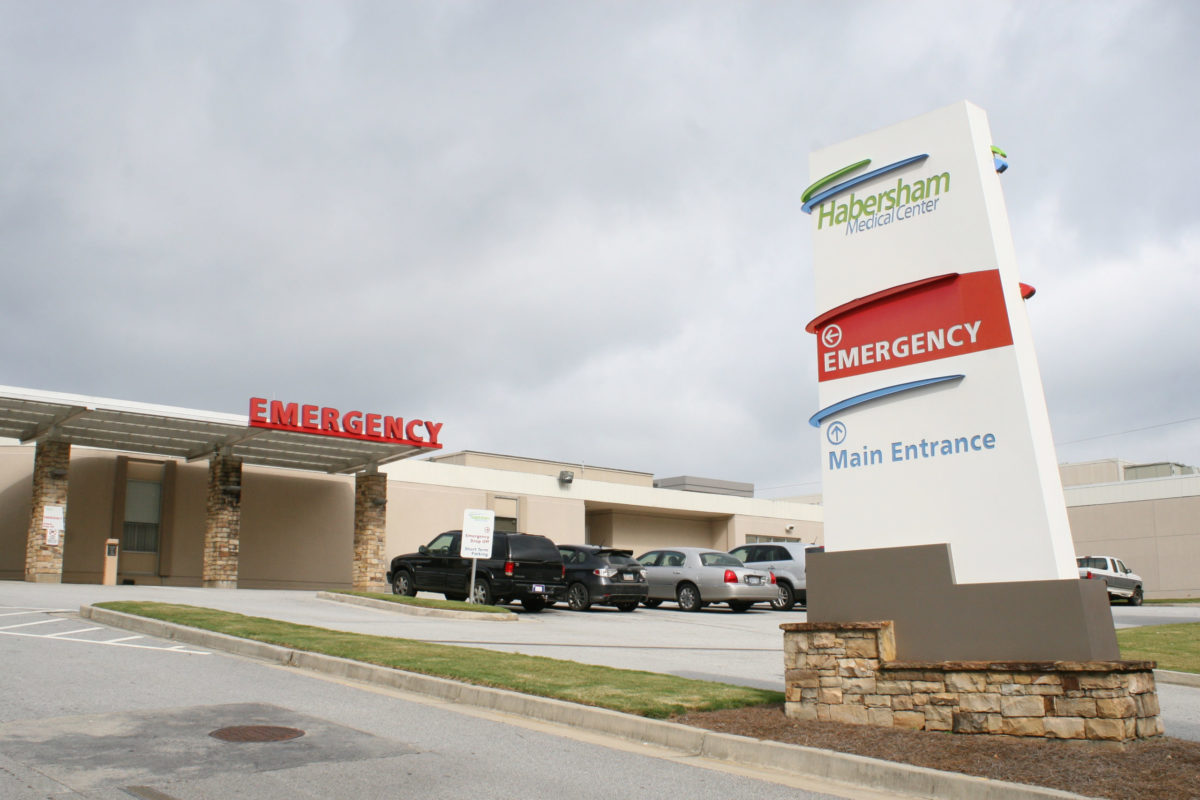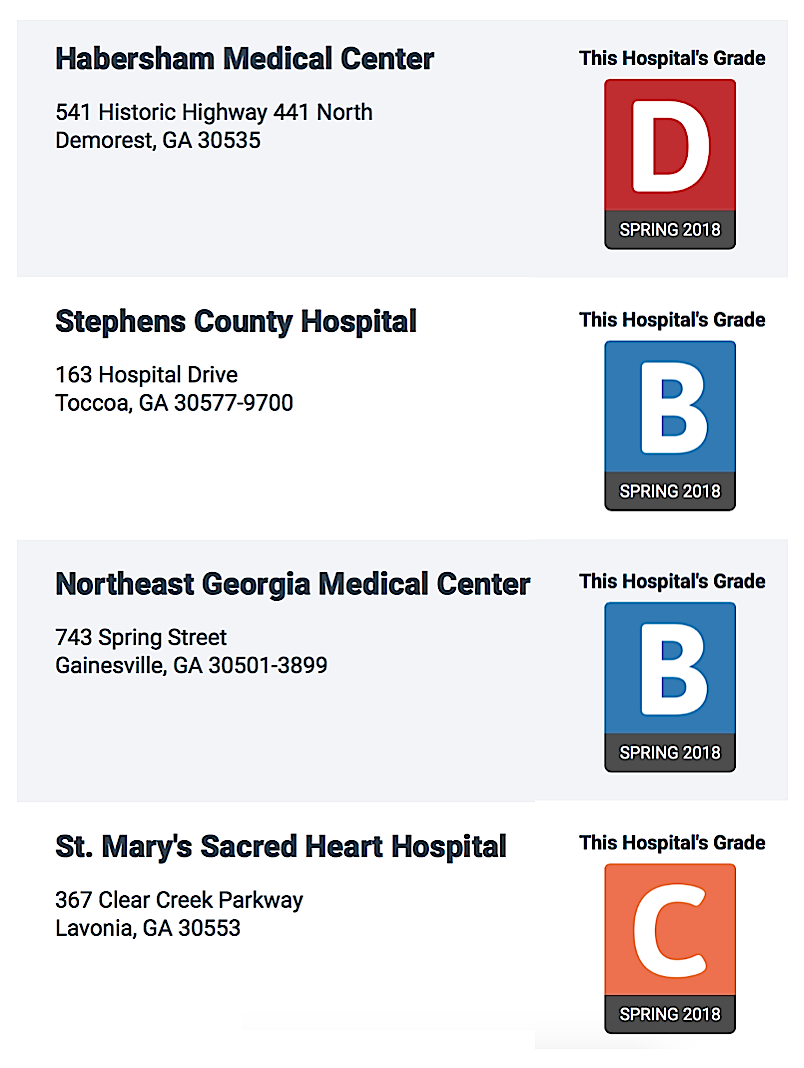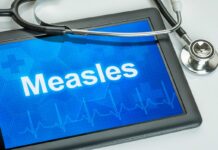
Fifteen Georgia hospitals scored an “A″ grade on patient safety in the latest Leapfrog Group report.
The ratings, released this week, showed that 21 percent of hospitals evaluated in the state got a top grade. That’s a slightly higher percentage for Georgia hospitals than in the Leapfrog rankings issued last fall, but it trails the national average of 30 percent getting “A” grades.
Leapfrog, a patient safety organization founded by employers, issues the rankings semi-annually.
Georgia’s 15 “A” hospitals were a mix of urban and suburban hospitals and smaller rural facilities. Three WellStar Health System hospitals received a top grade, as did four Piedmont Healthcare hospitals.
Habersham Medical Center scored a “D”. Stephens County Hospital and Northeast Georgia Medical Center in Gainesville both received “B” grades.
Click here to view hospital ratings
No Georgia hospital received an “F.″
The 21 percent of “A’’ hospitals put Georgia in 35th place among the states, up from 40th in the fall 2017 rankings. (Here’s a link to the Georgia grades.)
The hospital scores are calculated by patient safety experts, who use 27 evidence-based measures.

Leapfrog says it’s the only national hospital rating that focuses just on errors, accidents, injuries and infections that collectively are the third leading cause of death in the United States. The safety measures analyzed include physician staffing in intensive care units; computerized ordering of medications; nursing workforce; proper handwashing and other hygienic measures; and infections such as “C. diff” and “MRSA.”
The organization’s goal is to encourage consumers to consider safety when selecting a hospital. Leapfrog also says it believes the grade will foster strong market incentives for hospitals to make safety a priority.
It’s estimated that there are 700 deaths every day from preventable medical errors.
“The national numbers on death and harm in hospitals have alarmed us for decades,’’ Leah Binder, president and CEO of Leapfrog, said in a statement. “What we see in the new round of Safety Grades are signs of many hospitals making significant improvements in their patient safety record.’’
The hospitals, she added, “are doing the hard work, and we salute them as well as the leaders, researchers and organizations fighting every year for patient safety.”
Hospitals say perspective is important
The five states with the highest percentage of “A” hospitals in this spring’s ratings are Hawaii, Idaho, Rhode Island, Massachusetts and Virginia.
Leapfrog gives grades to about 2,500 hospitals in the 50 states and Washington, D.C., based on how they prevent medical errors, injuries, accidents and infections. Not all hospitals are graded: Critical access hospitals, VA hospitals and pediatric facilities are omitted.
Leapfrog, in compiling the grades, used publicly available data from the federal Centers for Medicare & Medicaid Services (CMS), the Leapfrog Hospital Survey, and the American Hospital Association’s Annual Survey and Health Information Technology Supplement.
The Georgia Hospital Association said other organizations have rankings of hospital performance that use different criteria, data and methods to calculate scores. And GHA said some information used to calculate Leapfrog hospital grades can be more than 2 years old, and may not reflect recent improvements.
“Hospitals are leaders in transparency with regard to quality measurement and have shared safety and quality data with the public for more than a decade,’’ Earl Rogers, president and CEO of GHA, said in a statement. “When making health care decisions, patients should use all available tools at their disposal such as talking with friends and family and consulting with doctors, nurses and other health care providers.”
Georgia Watch, a consumer advocacy organization, praised the Leapfrog information as valuable.
“As a consumer, you often have the ability to decide where to get your care,’’ said Beth Stephens of Georgia Watch, who is also a regional leader for Leapfrog in metro Atlanta.
“We encourage people to seek information about how much their care is going to cost, including how much their insurance will cover,’’ she said. “Patients should also research the quality of care they will receive from providers, and the Leapfrog Hospital Safety Grade is a reliable source for that information.’’
file photo







